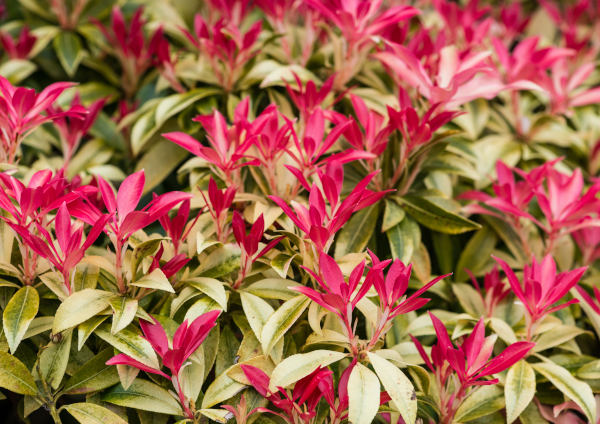How to grow Pieris
This member of the heather family contains 7 species of evergreen shrub, found growing in forests and hillsides throughout the world. It is cultivated for its handsome, glossy foliage which is often brightly coloured in bronze and red when young, and copious small, white, jewel-like spring flowers.
Pieris is also known by the common name lily of the valley shrub.
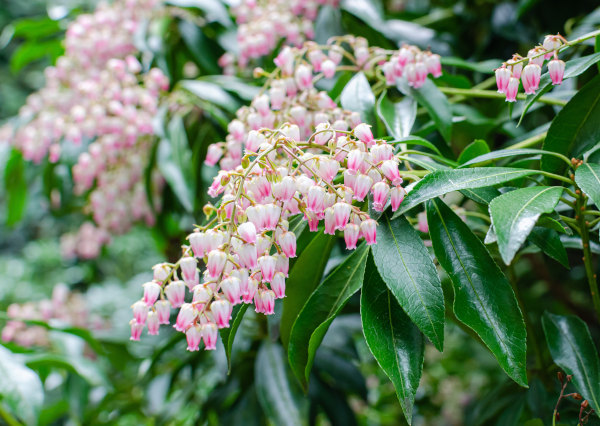
Zantedeschia is a genus of flowering plants from the family Araceae and is native to southern Africa. With a rich history dating back to the Ancient Romans, these deciduous or semi-evergreen perennials have been used as a symbol of celebration. Zantedeschia was Named after Professor Giovanni Zantedeschia, an Italian botanist.
There are two main forms of Zantedeschia: hardy and tender. Hardy forms of the plant can be grown outdoors, enjoy moist soil and full sun or partially shaded conditions - these are known as Arum lilies. Tender forms of Zantedeschia prefer being grown in containers or pots and should be brought inside over the winter - these are known as Calla lilies.
With tuberous flora in all colours from whites, yellows and oranges to deep reds and purples, Zantedeschias are not to be overlooked in any garden, as long as they have sufficient sunlight to grow in.
Ready to learn more about growing Zantedeschia? Read on for all there is to know...

Key Information
Soil pH
Position
Hardiness


Where & when to plant Pieris
Position- Full sun to dappled shade
Soil- Moist, well-draining, acidic
Flowering Period- Spring
Hardiness- Hardy
For best results, plant in autumn or spring. An autumn planting can be done by those gardening in mild conditions (and broadly speaking, this is the southern half of the UK). For those liable to very cold winters, it is best to wait until spring (generally the northern half of the UK). Planting can also be carried out in summer, though be prepared to water regularly.
Pieris likes humus-rich soil in dappled shade, such as that found in a woodland garden or shrub border. Full sun is fine in cooler regions, though in the hotter south new growth can be damaged by leaf scorch.
Pieris demands acidic conditions; if you don’t have this, choose a compact variety and grow it in a large container filled with ericaceous compost.
How to plant Pieris
In the ground
- Clear the chosen area of weeds.
- Dig a planting hole several times larger than the root ball.
- Place the plant in the hole, ensuring the top of the root ball sits level with the surface of the soil. Too low and the plant may rot, too high and the roots can dry out.
- Backfill with soil and firm in gently.
- Soak well with water.
- Mulch around the base with ericaceous compost or a pine bark mulch.
In a container
- Choose an appropriate container (the bigger the better), ensuring there are plenty of drainage holes.
- Use a good quality ericaceous potting compost with plenty of horticultural grit mixed in, and, if not already present in the compost (check the description on the bag) some slow-release ericaceous plant food.
- Start by partially filling the pot with compost; enough so that when placed on it the upper surface of the root ball is about 3cm lower than the top of the pot.
- Infill all the space surrounding the root ball with compost, firming down with your fingers then adding a little more so the plant is held tight.
- Pick up the pot (if you can!) and lightly tap on the potting bench or ground a few times to help further settle the compost around the plant.
- Soak well with water.
- A mulch with horticultural grit will look attractive and help to prevent a ‘cap’ or crust forming on the top of the compost (something container plants can suffer due to the artificial nature of their watering).
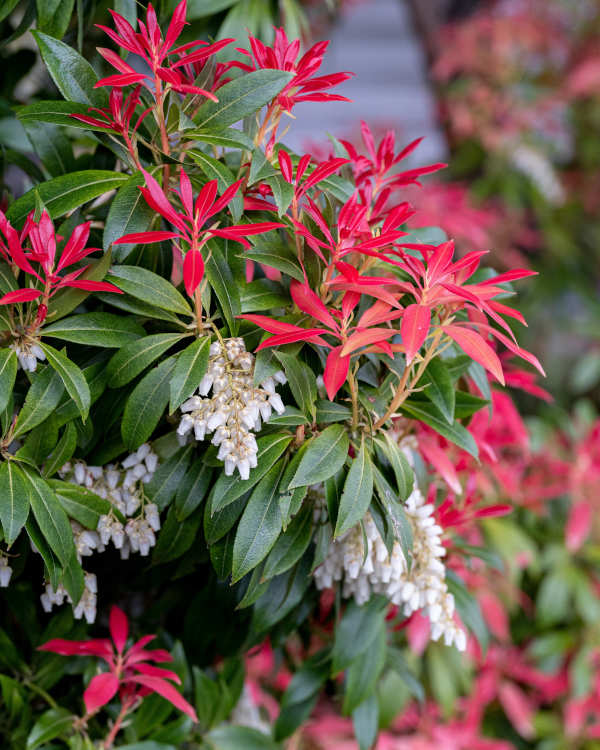
What to plant with Pieris
Pieris shares the exact same cultivation requirements as rhododendron, making the two a perfect pairing. For some more acid-loving plants to add to the mix, we suggest camellia, hydrangea, enkianthus and physocarpus. What could be better?
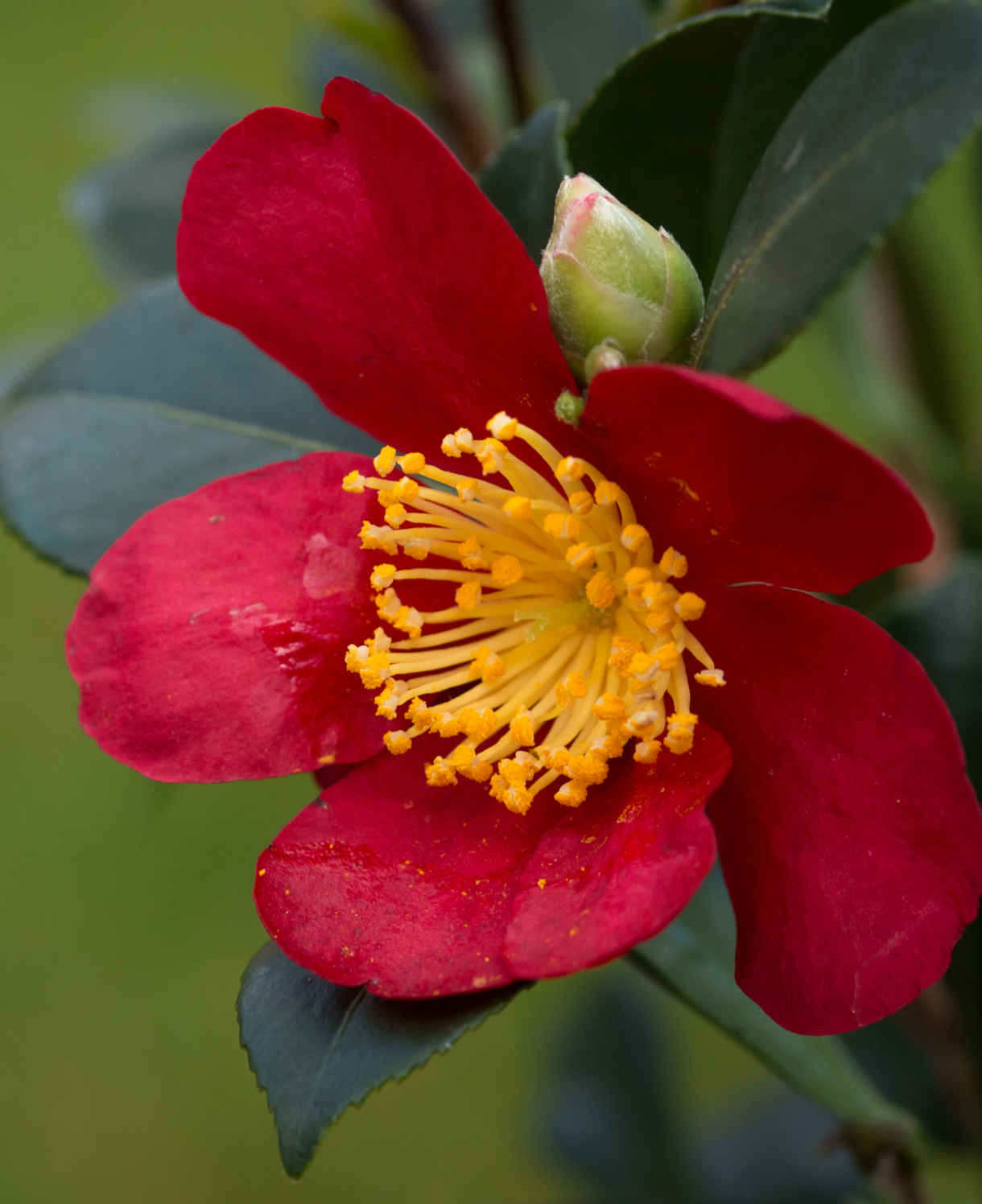
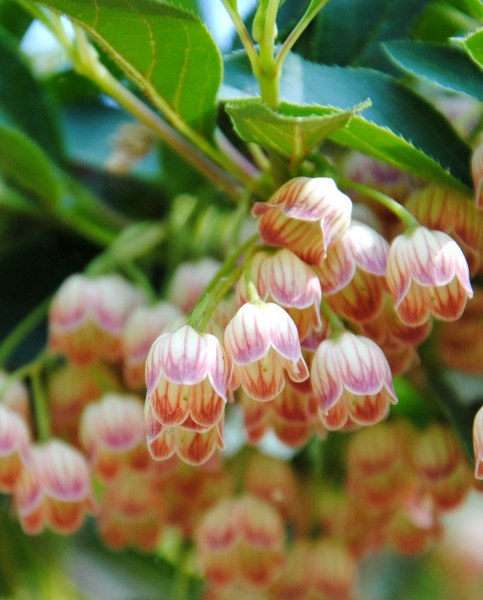
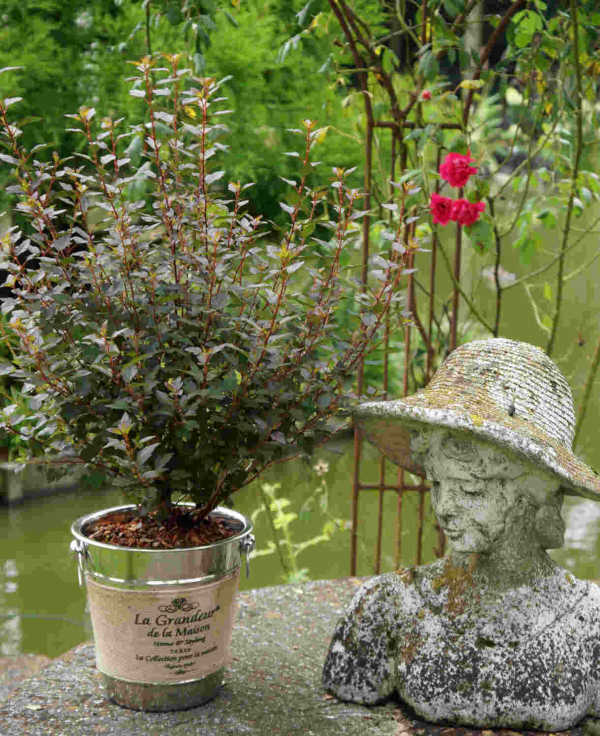
How to care for Pieris
Pruning and Deadheading
Pieris is best left unpruned, apart from the removal of any dead, diseased, damaged, or crossing growth. This is best done immediately after flowering in spring.
Remove faded flowers as required.
Watering
Water regularly until established, and then in very dry periods thereafter.
Container-grown pieris will need watering regularly throughout the growing season. Keep just moist during winter.
Cold Protection
Pieris is hardy enough to withstand the average UK winter, though its young growth may be damaged by a late frost. On mature plants this can be pruned out in late spring, though young plants may benefit from protection if a late cold snap is expected. The easiest way to do this is to pop over a temporary fleece jacket.
Pests and Diseases
Pieris is relatively problem-free, though can be susceptible to honey fungus. Avoid planting in the vicinity of a decaying stump or old, dying tree, as these indicate an increased likelihood of honey fungus in the area.
How to propagate Pieris
Pieris can be propagated by cuttings in summer.
- Find non-flowering shoots 5-10cm long and snip off the plant.
- Put them in a plastic bag straight away to prevent drying out.
- Fill a container with a compost mix which is at least 50% perlite (or if you prefer, as we do, 100% perlite).
- Remove the lowest third of leaves.
- If the remaining leaves are large, cut them in half (to reduce water lost through transpiration).
- Insert the cuttings into the compost and water lightly. Several cuttings can be put in the same container if there is enough space to do this without them touching.
- Place in a propagating unit with bottom heat if you have one, or covered with a plastic bag on a windowsill if not (out of direct sunlight).
- Keep the cuttings misted and occasionally watered until they root. You will know this has happened when roots emerge out of the bottom of the container.
- Gently remove rooted cuttings and pot them into individual pots. Grow on in an unheated conservatory or greenhouse they are big enough to be planted out.
Common Pieris questions
How much sun does pieris need?
The ideal situation for pieris is in light, dappled shade. Full sun will be tolerated in cooler regions, though in hotter parts of the country this can result in leaf scorch.
Is pieris poisonous to humans?
The leaves of pieris can cause severe discomfort if ingested.
Can pieris grow in pots?
Absolutely, and in fact this can be a good way of enabling those without acidic conditions to enjoy it. Choose a compact variety and fill the pot with ericaceous compost.
